While there are a range of resources available on how to learn Spanish, most are geared toward teenagers or college students. Warren Hardy has been developing and fine-tuning his system for over 20 years—specifically with baby boomers in mind. He says that anyone, no matter what your age, can learn, and it can be fun and easy too.
While it’s not necessary to know Spanish (or any other language) before taking the plunge to travel or live in a different country, there are some definite benefits to getting a handle on the local language. Many of the world’s best retirement destinations are Spanish speaking countries, including in Spain, Costa Rica, Ecuador, Peru, and Mexico.
And now—as everybody stays home—it could be the ideal time to take on the challenge yourself.
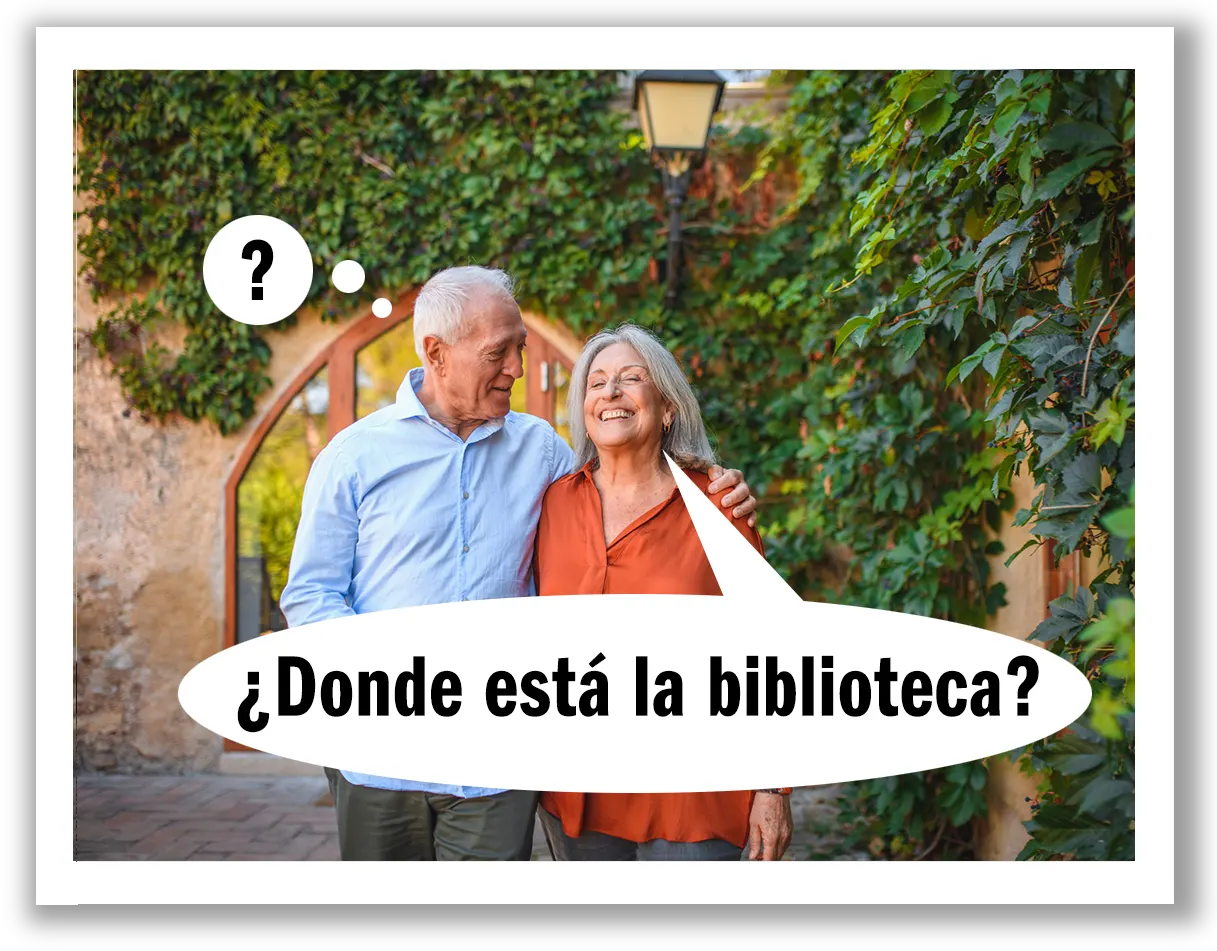
What's the #1 Thing Every Expat Says They Wish They'd Done Before Going to Latin America?
"I wish I'd learned a bit of Spanish…"
In 20 Minutes You Can Start Speaking Spanish. Guaranteed....
Language Lessons, Love Affairs, and Rich Opportunity
By Warren Hardy
Teaching Spanish to expats has been the most life-affirming role I could have imagined and even after 47 years, I still enjoy teaching. But, way back when, I wasn’t sure my teaching career was going to get off the ground at all. I mean, honestly, would you want to study Spanish from a guy named Warren Hardy? Probably not. I thought of changing my name to Pepe Gonzales, but my mom didn’t like the idea.
I became fluent in Spanish in my youth while living in Argentina. When I went to college, as fortune would have it, I found work as a private tutor teaching doctors Spanish at the local hospital. Turns out, I had a gift for teaching.
I got my degrees in education, with a major in Spanish, and started teaching in 1972. My first job out of college was with the Public Health Service where I was contracted to develop a course for doctors who were practicing in rural health clinics where mostly Spanish was spoken.
After several years I decided to start my own school in Tucson. The school was a great success until 1988 when the peso devaluated and Mexican business in Tucson dwindled. By then I was ready to take a break and I had fallen in love. I sold my school.
I married the love of my life, Tuli, and we honeymooned in San Miguel de Allende, Mexico, in 1990. We were enchanted with the little colonial town and decided to put down roots.

I founded the Warren Hardy School and began teaching.
I had been teaching Spanish for a long time but I had never taught students over 60. These students here, many of them expat retirees, were smart and curious, they wanted to learn but their needs were different and they learned differently than younger students. I soon found that my methods did not work for this group. One day, 70-year-old Martha Smith blurted out in frustration; “I don’t want to learn grammar. I just want to be polite and get what I need!”
That was an “a-ha moment” for me. I threw out all my old ideas and methods and started over. I broke my new course into two parts:
Knowing how to be courteous.
Knowing how to express your needs and wants with confidence.
I began to write handouts which became books, and later audiotapes. It took about 10 years to hone the course to perfection and create all the tools. Then, a few years ago, I began filming my course.
In the beginning it was crude and I didn’t like myself in front of the camera. If you have ever seen yourself on camera you might know the feeling. After several years trial and error I found a videographer producer and developed a way of teaching on camera that really worked. This allowed me to create a ground-breaking, online Spanish course.
My online course is the easiest way to start speaking Spanish at home. I personally teach this course through a series of fun and highly-effective videos and games. Watch, listen, read the subtitles, and repeat after me. You practice at your own pace and on your own schedule.
Decades, and tens of thousands of students later, I still get a thrill out of watching people learn and knowing what I am giving them will change their lives for the better.
I know that when I teach Spanish to you, I am not just teaching Spanish. I am enhancing your opportunity for a new life, enabling you to connect in a language that will expand your experience of a different people and culture—a connection that will give you comfort while you reinvent yourself in a Spanish-speaking world.
None of this is in the brochures and it’s not what students ask of me when they register for classes...but it’s what the people I teach and care about get from me. You see, I believe in the power of connection through language. I believe in the capacity to learn and grow and reinvent oneself whatever your age. And when you come to me, I believe in you. This is why I teach Spanish to expats. It is truly a life-affirming role.
Here are three very different experiences from expats learning Spanish abroad.
Embracing Our New Culture with Easy, Online Spanish
By Gabriele Walkow
As soon as we set foot in Panama, Dan and I fell in love with this picturesque and geographically diverse country. From Panama City, a cosmopolitan gem stretching along sparkling Panama Bay, to the cooler coffee highlands of Boquete, to the pristine Pacific beach town of Pedasi, to the beautiful Bocas del Toro archipelago, Panama offers up a timeless tapestry of exploration. Combine that with warm, wonderful, and welcoming people and we were sold, promptly beginning our immigration paperwork on our return to Florida.
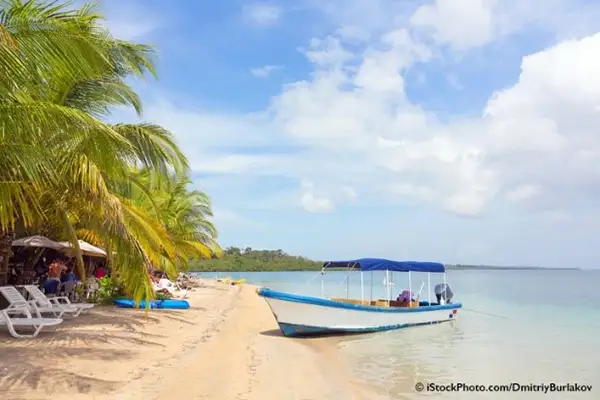
After several more months of research and scouring the International Living website for all articles related to this colorful country, I decided to buy the Warren Hardy Online Spanish Webtutor and learn this lyrical language. I haven’t looked back since.
Yes, there is some English spoken in Panama—especially Panama City—because of its strong ties to the United States, which date back to the building of the Panama Canal. And yes, sometimes translations come from the most unexpected sources: a grandmother at the local supermercado pointing out the sour cream after overhearing me telling my husband in English that I can’t find it; the young high school student helping us place our order at McDonald’s; the construction worker behind us in the line-up to pay a speeding fine; and a young gentlemen walking by and hearing me struggling with understanding the receptionist at the local doctor’s office.
But, all in all, learning some Spanish when living in rural Panama—where we ended up—is very important. It enriches your life both culturally, mentally, and practically as your gardener, housekeeper, store keeper, veggie truck guy, and fishmonger will almost certainly only speak Spanish. Now, thanks to Warren Hardy, I can get by pretty well in our new life nestled between rolling pasture lands and stunning surf near Pedasi on the Pacific Coast’s pretty Azuero Peninsula (also known as the Dry Arc).
I started the Warren Hardy Online Spanish Webtutor well over a year before we made our final move to Panama—and I was glad I did. Warren’s warm, encouraging, and enthusiastic 20-minute online presentations became my foundation to the Spanish I now know. It was like meeting with a good friend every time I logged in and started a lesson. I still feel that way when I go back and look something up that I have forgotten.
To this day, the link to Warren’s webtutor classroom is still easily accessible in my inbox because going back and redoing lessons and rechecking pronunciation is invaluable, especially now that I am living in Panama and using my Spanish daily. In addition to the online presentations, there is a well-planned written component which, after you complete the course, leaves you with a 100-plus page workbook for easy reference.
Although power verbs, verb conjugation, and vocabulary are foundation building, one of the most important things I took away from this course is the importance of Spanish social protocol or the Cortesia. It is one of the first lessons covered and Warren provides gentle reminders throughout the lessons on how important courtesy, indicating good-breeding, is to the Hispanic culture.
Be the first to give the cheerful greeting Hola or Buenos and make eye contact. You will immediately get a warm reception and break down all cultural barriers. Imagine the surprised and appreciative looks I receive in local restaurants when I wish people Buen Provecho (“I hope you get the most from your meal.”) as I pass their tables. Con Permiso, Por Favor (“With your permission, please.”), always elicits a smile and a parting of people as you pass through a group on the sidewalk, in the grocery store, or at the bus stop.
Before leaving a party, it is common practice here to go around and say goodbye to everyone. We are sure to practice this custom, known as the despedida, every time we leave a gathering and, again, we are met with appreciative responses.
Warren advises to use social protocol every day, everywhere and I have taken this to heart and can honestly report that it gets you miles of smiles. My biggest compliment comes when Panamanians ask me where I learned to speak Spanish so well. Gracias, Warren
How a Few Words of Spanish Can Make a World of Difference
By Jon Sumple
When my wife Karen and I decided to sell everything we owned for an open-ended, slow travel lifestyle, we chose Mexico and South America as jumping off points so we could immerse ourselves in indigenous cultures and maximize our opportunities to speak Spanish.
There was only one challenge: I was 35 years removed from four years of Spanish classes and Karen’s Spanish was limited to “muchas gracias” and “Cinco de Mayo”. There was rust to shake off for me and a new beginning for Karen.
We researched a variety of language learning apps to see if anything resonated, but we always found ourselves asking questions like: Is this approach really going to help us learn essential conversational Spanish? Because, let’s be reasonable, how practical is memorizing the names of kitchen appliances when we need directions to the mercado? After a week or so on different apps, we would lose interest.
We went on a scouting trip to Quito and Cuenca, Ecuador, to test the waters in the fall of 2017, and during our two-week visit, it became apparent that learning a few phrases wasn’t going to work if we planned on staying in Spanish-speaking countries for several years. While roughly half the people we encountered in Ecuador spoke some English, we felt it was our responsibility to speak like locals if we wanted to live like locals.
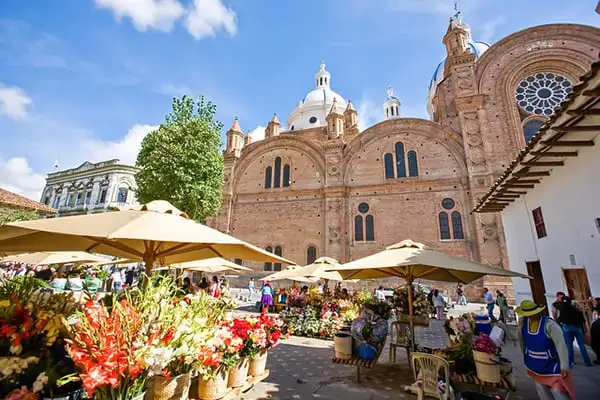
Upon returning from Quito, I discovered Warren Hardy Spanish while perusing an issue of International Living. Based on the description, it fit the bill of what we were looking for: Instruction that provides fundamentals for engaging in daily conversations without learning the language from top to bottom and inside out.
The course included printable materials that are easy-to-digest when you’re working through the lessons. We also liked the way the videos and worksheets reinforce the material, which through repetition of writing and speaking Spanish, you learn that much quicker. And Warren himself has a way of making you feel comfortable during the video classes.
The concept of power verbs—a key concept with Warren Hardy training—was especially appealing. Basically, by learning how to conjugate a handful of verbs, such as “need”, “can” and “have”, you can add the infinitive of other verbs and create nearly endless sentence constructions. It’s a great hack and proved useful right away.
Karen devoured the course. After spending a few hours one night reading through the materials, she started sharing information with me daily. By the time we left Seattle in August 2018, Karen had a grasp of basic phrases for practical conversation.
We both work remotely, so we’re not on a permanent vacation by any means. WiFi is an essential part of our daily requirements, and simple questions like “Tienes WiFi?” or “Que es clave de WiFi?” (Do you have WiFi? And, What is the WiFi password?) are questions we ask everywhere we go. Plus, starting any conversation in the native language often helps establish a level of respect.
We’ve seen too many visitors get frustrated when they can’t communicate in Spanish. We firmly believe it’s up to you to learn, at the very least, a few phrases to show you’re trying to communicate in the local language. It makes a world of difference, even if you struggle. While someone might say “no” when you ask if they speak English, you’ll find they often speak enough English to help you out, if you try to speak Spanish first.
After nine months in Mexico and three months in Ecuador, we’re now in Peru, and we’re both comfortable enough with our Spanish-speaking skills that we can get by with confidence. We understand enough, and when we need help, we simply ask—in Spanish, of course.
Locals appreciate the when you speak their language, and they go out of their way to help when you struggle. Making the effort is what counts and learning with Warren made it easier for us to learn enough to get the conversation started.
Our Expat Dilemma…and How We Solved It
By Yvonne Kochanowski
The idea of moving to a foreign country captured the imaginations of my husband John and I years ago, the first time we landed in an unfamiliar port. The people, the cooking aromas, the gardens—it all intrigued us. Add in the benefits we learned about from International Living and we were sold. Overseas expat living, here we come.
In the back of our minds, though, one doubt lingered. Neither one of us is good with foreign languages. A solution became obvious when IL offered Warren Hardy’s course.
Think you can’t learn Spanish online from a website? I had my doubts—not for my husband John, but for me. Turns out I needn’t have worried, and if I can do it, so can you.
Practice Makes…Comfortable
I will ’fess up right now—I don’t learn languages easily. Something about rote memorization and my brain, fully capable of so many other things, doesn’t compute. Studying daily was a must, as was following Warren’s instructions about using the workbook.
John and I booked a trip to Costa Rica for this past May and, knowing we’d be spending a good amount of our time on our own in a rental car, we doubled down on our daily sessions. To say we became obsessive wouldn’t be too far from the truth, but the fact was, we were afraid we wouldn’t be able to navigate the country, even one where the use of English is widespread, without a working command of Spanish.
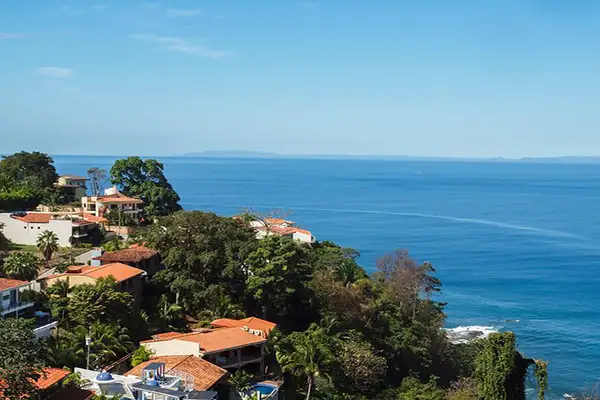
Local Practice
We landed with a plan to challenge ourselves to speak only Spanish at every opportunity. No, “Lo siento, no entiendo”, (I’m sorry, I don’t understand) for us. We would apologize for our stumbling words but understand we would. It turns out we needn’t have worried, because Warren Hardy had our backs.
Yes, we struggled at the beginning. There is no substitute for talking with a native speaker who talks at the tempo locals do. Think about how we Americans rattle fast in English and you get the picture.
We used, “Mas despacio por favor” (more slowly please) a lot, which often made people switch to English. Their mastery of our language begins in the equivalent of our middle-school grades. But we wanted to learn, and they were more than delighted to help the gringos entusiasta because we tried.
What You Learn
When you read that Warren Hardy’s foundation course gives you the tools to function in the Spanish language and develop a cultural understanding of how to get along, believe it. He begins with social protocols, known as las cortesias. People in Spanish-speaking countries are unfailingly polite and courteous, and it pays to be able to question and respond in kind.
You then move into the most common verbs and their tenses. Each lesson is practical, with full sentences you can immediately see yourself using in a real setting. Over time and with repetition, you add to your basic vocabulary with nouns and connectors.
Other components contribute to your learning, like using the downloadable workbook for written ejercicios (exercises). In addition to listening to Warren and watching the words appear on the screen, audio games in each lesson allow you to practice your pronunciation while listening to native speakers. (Big hint: This is how you learn to comprehend when someone speaks fast).
Time Well-Invested
Friends say they could never learn another language because of the time required but it doesn’t feel like a drain with this course because learning is fun. I plug in a 20-minute session when I’m at the gym or walking in the neighborhood.
I pick up the workbook at other times, working about 10 minutes on the last lesson in written form. You can spend a half-hour a day, repita each lesson as many times as you want, and develop a working fluency in Spanish with Warren’s courses.
To wrap up our story, we thrived during our Costa Rican adventure. We can’t say enough wonderful things about this friendly country of multiple climate zones, easy access, and amazing nature. Let’s not forget the food, history, and multiple times John and I tripped on our tongues over-complicated phrases and laughed ourselves silly with the locals.
With a few months’ investment in the Warren Hardy system, we found those phrases eventually. Wonderful people in a beautiful part of the world accepted us with open arms. Costa Rica is a retirement possibility, along with other Spanish-speaking countries.
How to Learn Spanish in 20 Minutes
Join Warren for a simple class in Spanish below:
https://www.youtube.com/watch?v=hrFR9Y1XVQc&feature=youtu.be
The very best way to enjoy the culture of any country is by being able to speak the language. If you’re contemplating a move to a Spanish-speaking country, you must start with planning on how to learn Spanish. You don’t have to be fluent. You don’t need to be perfect every single time. But you do need to master a few basics.
Beyond being able to order another cerveza (beer) and ask where the bathrooms are (and those are important, of course) you might want to be able to talk to the locals…to ask for directions and get to the places you want to visit, to go about your daily errands and generally make yourself understood.
Why should you learn Spanish? Because you never know where it will take you. Not only is this important for your comfort but it will greatly enrich your experience traveling or living abroad. And it will earn you a great deal of respect from your local friends and neighbors.
Here are three very different experiences from expats learning Spanish abroad.
Adventures and Feeling Younger Learning Spanish Overseas
By Michael Sump
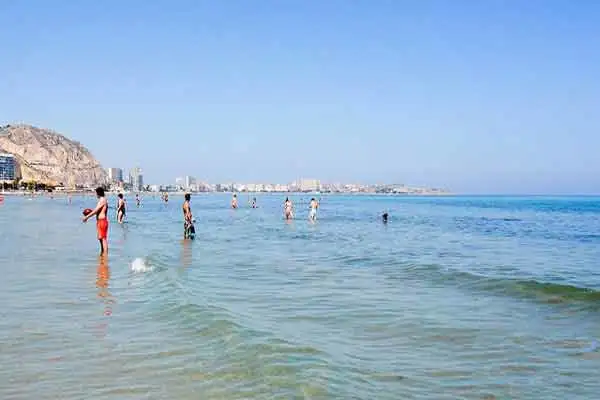
When my wife, Suzanne, and I retired, we loved the free time, but we found filling it with something meaningful a bit tricky. We wanted to tackle new goals and new activities and avoid flabby waistlines and flabbier minds. We were determined to make the most of our time.
We started by exploring the United States in a small RV. We visited most of the national parks and stayed active by biking and hiking. Along the way, we discovered that we didn’t need as much stuff as we owned, that a more minimal life was liberating, and that we no longer wanted our house of 25 years. This was followed by the “Great Purge,” as we spent a year downsizing and selling the house.
After two years as full-time nomads, we realized—in the time it takes to blow an engine—that it was time to try something new.
We had circled the globe dozens of times in our work lives, but we had never crossed the equator into the southern hemisphere. So we decided to explore South America. But we wanted to pick up enough Spanish, so we could ask for directions to the bathrooms, order a beer, or give an address to a taxi driver.
For the last four years, we have been Spanish students on the move. We’ve spent time in 12 countries in Latin America and have found the people to be warm, friendly, and welcoming. Our travels have been a blast, but the schools and their contacts have lent structure to our voyage of discovery.
With some Spanish skills, your world will expand, your competence will increase, and you can choose whom to hire and how you will travel. On our first trip to South America, we visited Peru, Ecuador, Argentina, and Chile.
Going back to school in your 50s and 60s is an enlivening experience. It’s a wonderful way to meet young, energetic people. Their “my whole life is ahead of me” enthusiasm can extend to those of us whose lives are mostly behind us. Shouldn’t life be as exciting and full of possibilities for jubilados (retirees) as for the jóvenes (young people)? Our studies have made us feel younger and more mentally healthy.
Thanks to the schools we’ve attended, we have friends all over the world. We watched a fellow student sing in the Lima Opera Fest, and we’ll soon head to Bogotá to see a classmate’s newborn son.
There are also immediate advantages. You’ll have better access to local knowledge and services. A few bucks go a long way with a local seamstress, cobbler, or artisan, if you can describe what you want.
Travel can be tough on luggage and on shoes; locals can repair them for a few dollars. It’s much cheaper than back home.
You also have a way to handle emergencies: the doctor, a dentist.
When my tooth became infected in Chile, I was able to talk to the dentist about what was wrong and what we could try before submitting to an expensive treatment.
We started our language journey with five months in Costa Rica in 2014. We chose Costa Rica because it welcomes U.S. citizens and was close to home. We used Heredia, just outside San José, as our base for exploring the rest of the country, and we attended a highly ranked school (see sidebar).
We couldn’t have chosen a better place to start. Costa Rica is small and one can get from the Pacific to the Caribbean coasts in a day, or stop in the middle to explore the mountains, volcanos, and wildlife of the highlands. We also made trips to adjacent Nicaragua and Panama. Our immersion into the language was enhanced by two “home stays,” where our Mama Ticas kept things lively and introduced us to traditional foods and the tico culture.
The next year, we headed to South America. On our first stop, we fell in love with a school in Peru’s capital, Lima. It has become our “home school.” The teachers are talented and eager, and it’s located in an unbelievably beautiful place. Miraflores is a suburb of Lima that sits atop a tall cliff over the Pacific Ocean. A malecón (promenade) 300 feet above the sea winds through a string of parks for six miles along the coast.
Miraflores is both clean and safe. We are comfortable walking around, even at midnight.
We spent the next seven months exploring, including vacations to Easter Island, the Galápagos, and Tierra del Fuego. In the Galápagos Islands, you have such amazing access to sea lions, penguins, blue-footed boobies, and tortoises, that it’s easy to forget they are wild.
But what we enjoy most is being able to experience a city beyond the tourist route. We rent a local apartment, we shop in the local markets, we explore local venues. We walk everywhere, and we both weigh considerably less than when we started this adventure.
After South America, we headed to Europe (including three months in Spain). We found the Spanish of the motherland somewhat different, but we had enough basic vocabulary to get around. We spent the rest of 2016 traveling around non-Spanish-speaking parts of Europe.
Our next trip was to Mexico. To knock off some rust, we hired tutors (another useful approach) in Mexico City. After a month, we went to Guanajuato. This is a gem of a college town, surrounded by steep hills that any hiker would enjoy. We spent six months wandering around Mexico and even took a three-week journey into Cuba.
In Cuba, Spanish was crucial, because very few people speak English. It enabled us to work directly with providers, rather than having to rely on a costly, government-structured tour. Best of all, we were able to find out what the Cubans really think. They are incredible people who’ve experienced great hardships. They’re careful about what they say but will loosen up over a shot of rum and a Cuban cigar.
After a short visit to the States, we are now back in Peru. We’re meeting interesting people of all ages and catching up with old friends. One of our friends owns a leather workshop and is making me two hand-tooled belts, all leather, and better than any I’ve ever owned. I saw the tanned hide being cut and watched the workman handstamp the leather, using tools made from old automobile valve lifters. It’s costing me just $3.
We’ll be down here for another six months. This time, if we do our homework and keep practicing, we may cross the line into feeling truly bilingual.
The Challenges and Joys of Learning Spanish
By Janette Sullivan
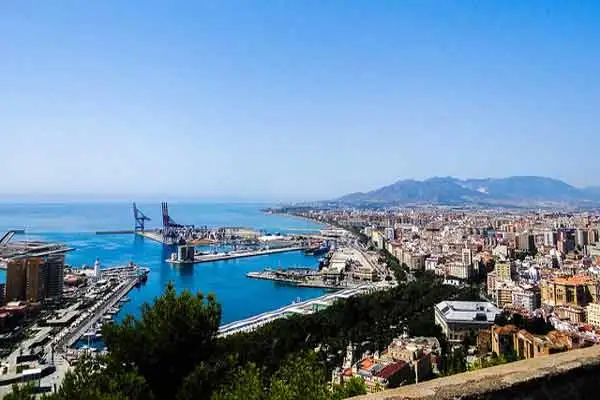
When I moved to Ecuador almost four years ago, I did not speak a word of Spanish. Well, I could say “good morning,” “good afternoon” and “good evening,” but that was pretty much the extent of it. I had decided before I moved that learning Spanish was very important to me, in order to better integrate into the culture here.
Ten days after I arrived, I enrolled in a fairly intensive Spanish immersion program. It was three days a week, four hours a day—no English allowed. I’m not going to sugar coat it…it was a challenge. There was a lot of charades going on for the first few weeks. But honestly, I think all those charades made the words stick better.
I had heard from someone that there was a young lady who worked in a local store that wanted to learn English. So I thought what a great way to improve my Spanish. I can teach her English, and practice my Spanish. We met in her store a few times a week, and then relocated to her house in the evenings. She was married with two little kids, so I learned a lot of little kid jargon. Before I knew it, I was joining her at her husband’s basketball games, and spending time with the kids.
Learning Spanish was a big learning curve, but before I knew it I was able to communicate fairly well. I was able to shop, exchange pleasantries, and even argue if needed. I went to school on and off for the first year, using the time off to actually practice what I had learned in school. (Spanish classes run about $8 to $10 per hour for an individual lesson, and $6.50 to $8 for a group lesson.)
I did, however, have a few blunders. One day, I asked a contractor working at my house if he would like a “child” in his drink instead of “ice” (hijo vs hielo), and I was constantly asking for “Thursdays” instead of “eggs” (jueves vs juevos). Mostly I just got funny looks, realized that I said something wrong and tried to correct it.
After a year of Spanish classes, I decided to undertake a home-stay in order to practice my Spanish. I had met a family who lived outside the city of Cayambe, high in the mountains. They were a fairly poor farming family, but generous people. The dad and kids all worked or went to school during the day, so I spent most of my time with Carmita, the mom. Every morning we worked the cows, cleaned the guinea pig cages, and did other farm chores. The whole time we would be chatting away in Spanish. It was a very interesting experience and really did help me learn more Spanish.
I try to incorporate several techniques into learning. I often find that I just like to venture out on my own and find people to talk to in Spanish, whether it is on the bus or at a restaurant. Also, I often tune the TV or radio into Spanish to listen to in the background. But, most important is that I fortunately have friends who find learning the language a very important quality, and we are constantly encouraging each other, sometimes even writing our emails to each other in Spanish.
I feel so much more confident and happy now that I am able to communicate. Like with anything in life, there is always room for improvement, so after nearly four years, I have gone back to school again. I find now that since I understand the language better, everything that I am learning at school is clicking so much faster. This time around has become very rewarding for me, which in return keeps me motivated to continue working up that learning curve.
How This Expat Improved Her Spanish Skills Through Knitting
By Warren Hardy

Margie is in her mid-60s and a retired school teacher from California. She is currently enjoying retirement in San Miguel de Allende, Mexico. One day she was in front of her house knitting when two local neighborhood girls walked by. She was used to greeting them in passing but today was different. The girls, about 12 years old, walked over to Margie and watched her as she knitted.
Margie didn’t know the word for knitting in Spanish, so she said it in English and asked what it would be in Spanish. The girls told her (it’s tejer = to knit) and she taught them the word knitting in English. The girls moved on.
A couple of days later the same girls passed the house once again and saw Margie. The girls wanted to see her knitting. Margie brought out her knitting and a couple of chairs and the girls looked on as Margie got to work with her needles. Margie saw that they wanted to learn to knit and the school teacher in her kicked in. She invited them to come back and she’d teach them to knit.
“I will never forget the excitement I felt getting ready for my first knitting class,” Margie told me. “I got my materials together and when the girls arrived we sat down and went to work.”
Margie says most of the lesson was show and tell but soon the girls were teaching her knitting words in Spanish. “I learned the word for knot, needle, and thread,” she says. “And we went through all the colors. They learned the English words and I learned the Spanish ones.”
Margie and the girls were both excited about their knitting/Spanish class and so they met again and this time the girls asked if they could invite their sisters. “The next class, there were five students,” Margie says. “Each girl brought one of their sisters and even one of their brothers showed up.”
Margie says as the lessons went on she was getting more comfortable with the Spanish terms. Over a year later, Margie’s knitting class has eight regular students. Not only is she learning Spanish, but she’s also been “adopted” by the girls’ families. “I’m invited to events with this family,” she says. “This is something that I cherish and would never have imagined in my wildest dreams. My Spanish, even though improved, still needs a lot of work, but that said, I do speak fluent knitting.”
Margie is not unique. Everyone can learn Spanish and as Margie’s story shows, you never know where learning even just a few important words is going to take you. No matter how lousy you think your Spanish is, there is always an opportunity for new friends and new adventures.
Related Articles
The World’s Best Places to Retire
One of the best places in the world to retire is Mexico
Retire to an Affordable, European lifestyle in Sun-kissed Spain
